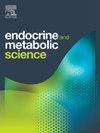Clinical profile of hypertension patients in primary health Care in Cirebon Regency, Indonesia
Q3 Medicine
引用次数: 0
Abstract
Introduction
Hypertension is a catastrophic non-communicable disease increasing in prevalence globally. This study aimed to assess the clinical profile of hypertensive patients in primary health care services in Cirebon Regency, Indonesia.
Method
This descriptive study employed a purposive sampling method, recruiting 97 adult patients diagnosed with essential hypertension at the Talun Community Health Center, Cirebon Regency, West Java, from November 2023 to February 2024. Patients with secondary hypertension or hypertension in pregnancy were excluded. Data were collected through questionnaires, blood pressure measurements, and analysis of blood and urine samples. The clinical profile included family history, control status of hypertension, lifestyle factors, cardiometabolic parameters, and mental health status. Lifestyle factors encompassed both dietary habits and physical activity levels. Cardiometabolic parameters included body mass index (BMI), HbA1c, lipid profile, kidney function, and electrocardiogram. Mental health status was measured using the Depression Anxiety Stress Scales (DAAS). Univariate analysis was stated in frequencies, mean, or median.
Results
The mean age of the participants was 51.33 (±1.07) years, predominantly female (84.54 %). Subjects with a family history of hypertension were 52.58 %, and 75.3 % had uncontrolled blood pressure. Most subjects (79.17 %) engaged in light daily physical activity, while only 4.2 % reported excessive sodium intake. The average BMI was 26.04 kg/m2, with 35.5 % classified as class 1 obese. Additionally, 12.4 % of subjects had diabetes mellitus, 41.2 % were prediabetic, and 80.41 % had dyslipidemia. Albuminuria was detected in 54.6 % of participants, and 7.2 % showed evidence of left ventricular hypertrophy. Regarding mental health, 37.50 % experienced anxiety, 8.33 % reported stress, and 4.17 % suffered from depression.
Conclusion
The findings indicate a significant proportion of hypertensive patients in primary health care in Cirebon Regency have uncontrolled blood pressure. Sedentary lifestyle, obesity, dyslipidemia, albuminuria, and prediabetes were prevalent among these patients. Moreover, anxiety affected more than a third of the studied subjects, highlighting the need for comprehensive management strategies for managing hypertensive patients.
印度尼西亚锡雷本县初级卫生保健中高血压患者的临床概况
高血压是一种灾难性的非传染性疾病,全球患病率不断上升。本研究旨在评估印度尼西亚锡雷本县初级卫生保健服务中高血压患者的临床概况。方法采用有目的抽样方法,于2023年11月至2024年2月在西爪哇省锡雷本县塔伦社区卫生中心招募确诊为原发性高血压的成人患者97例。排除继发性高血压或妊娠期高血压患者。数据是通过问卷调查、血压测量、血液和尿液样本分析收集的。临床资料包括家族史、高血压控制状况、生活方式因素、心脏代谢参数和心理健康状况。生活方式因素包括饮食习惯和身体活动水平。心脏代谢参数包括体重指数(BMI)、糖化血红蛋白(HbA1c)、血脂、肾功能和心电图。采用抑郁焦虑压力量表(DAAS)测量心理健康状况。单变量分析用频率、平均值或中位数表示。结果参与者平均年龄为51.33(±1.07)岁,女性占84.54%。有高血压家族史的占52.58%,血压未控制的占75.3%。大多数受试者(79.17%)从事轻度日常体力活动,而只有4.2%报告钠摄入量过高。平均BMI为26.04 kg/m2,其中35.5%为1级肥胖。此外,12.4%的受试者患有糖尿病,41.2%为糖尿病前期,80.41%的受试者患有血脂异常。54.6%的参与者检测到蛋白尿,7.2%显示左心室肥厚的证据。在心理健康方面,37.50%的人感到焦虑,8.33%的人感到压力,4.17%的人患有抑郁症。结论希波本县初级卫生保健中有相当比例的高血压患者血压未得到控制。久坐不动的生活方式、肥胖、血脂异常、蛋白尿和前驱糖尿病在这些患者中普遍存在。此外,焦虑影响了超过三分之一的研究对象,这突出了管理高血压患者的综合管理策略的必要性。
本文章由计算机程序翻译,如有差异,请以英文原文为准。
求助全文
约1分钟内获得全文
求助全文
来源期刊

Endocrine and Metabolic Science
Medicine-Endocrinology, Diabetes and Metabolism
CiteScore
2.80
自引率
0.00%
发文量
4
审稿时长
84 days
 求助内容:
求助内容: 应助结果提醒方式:
应助结果提醒方式:


